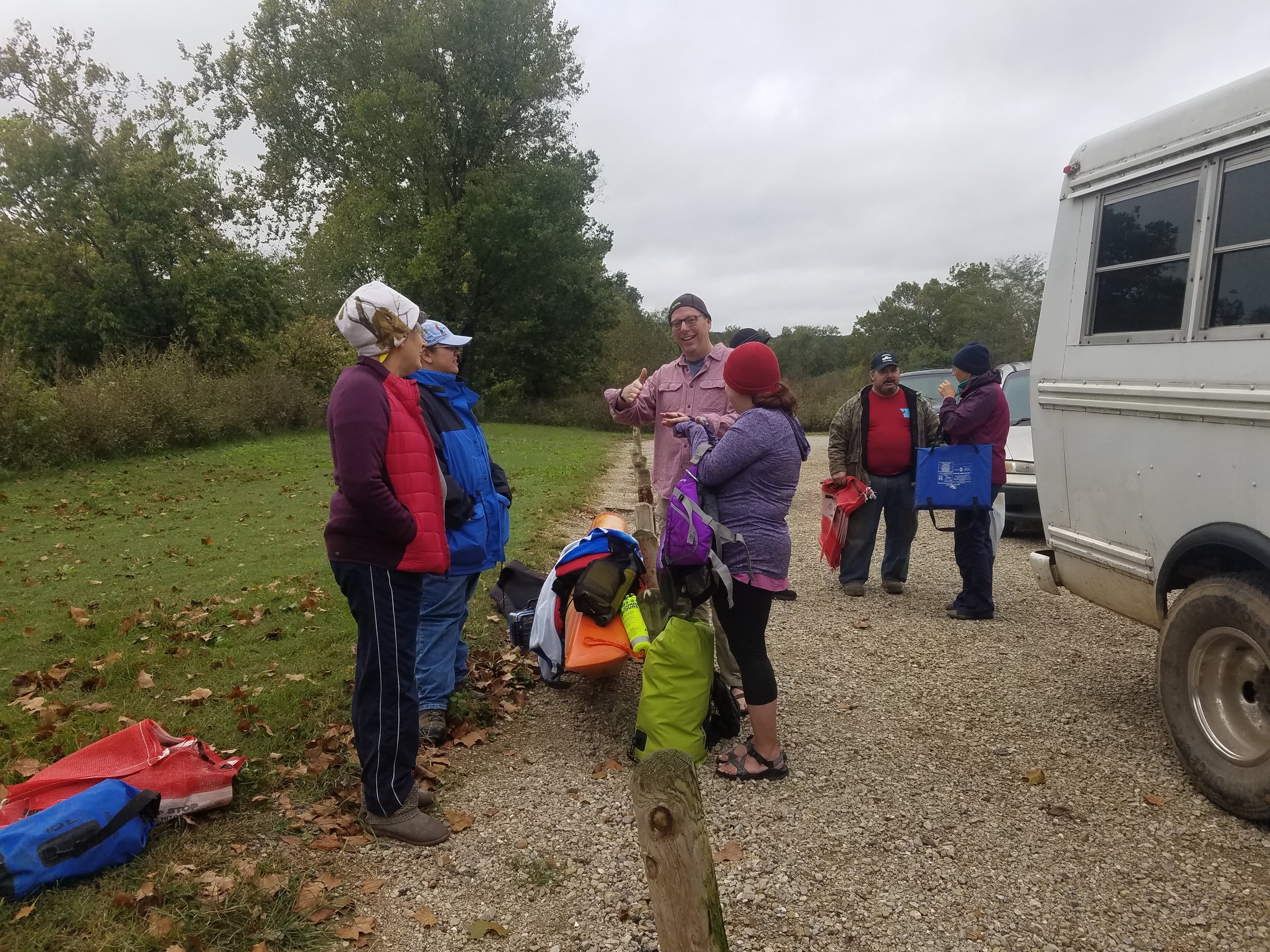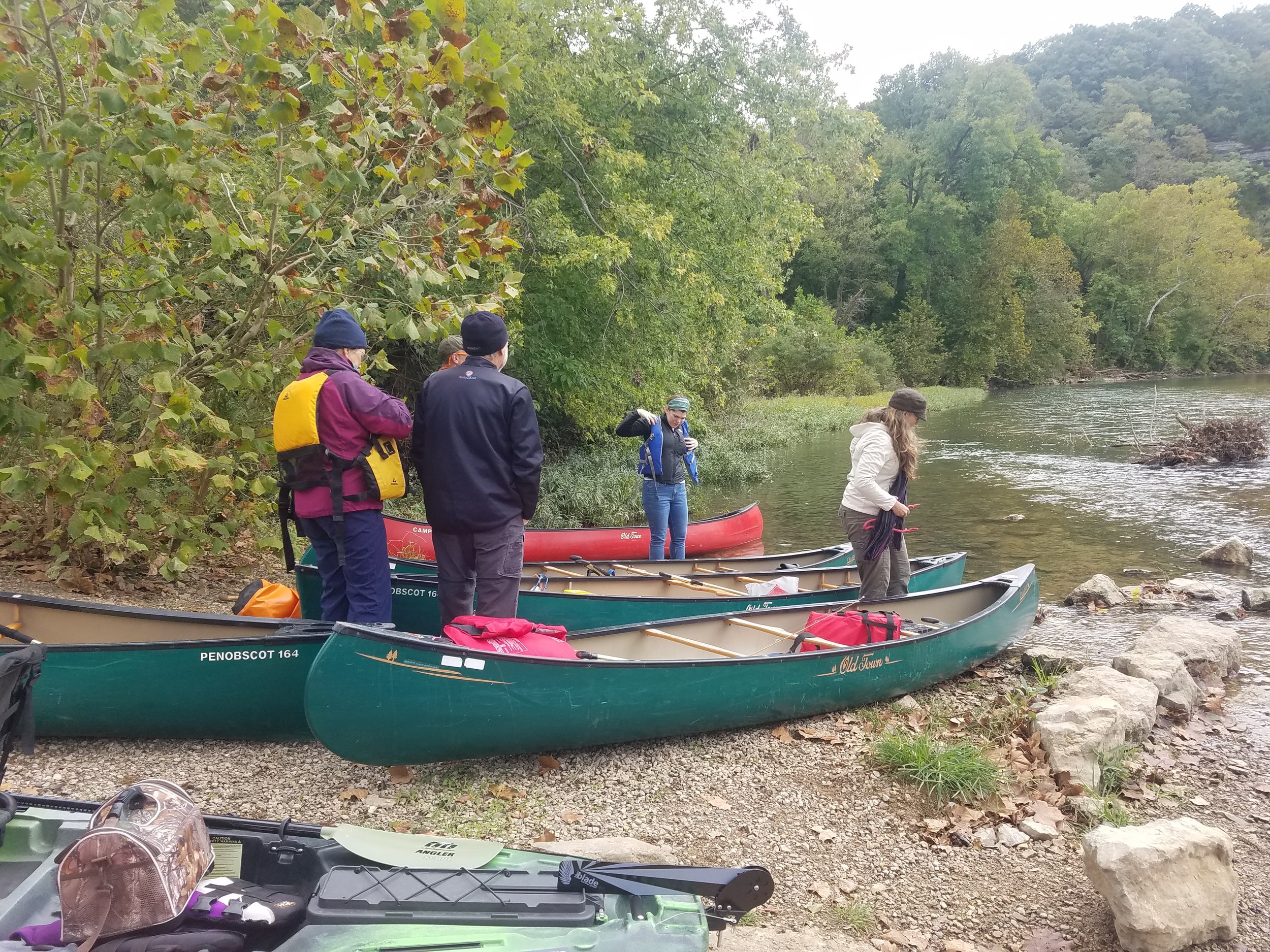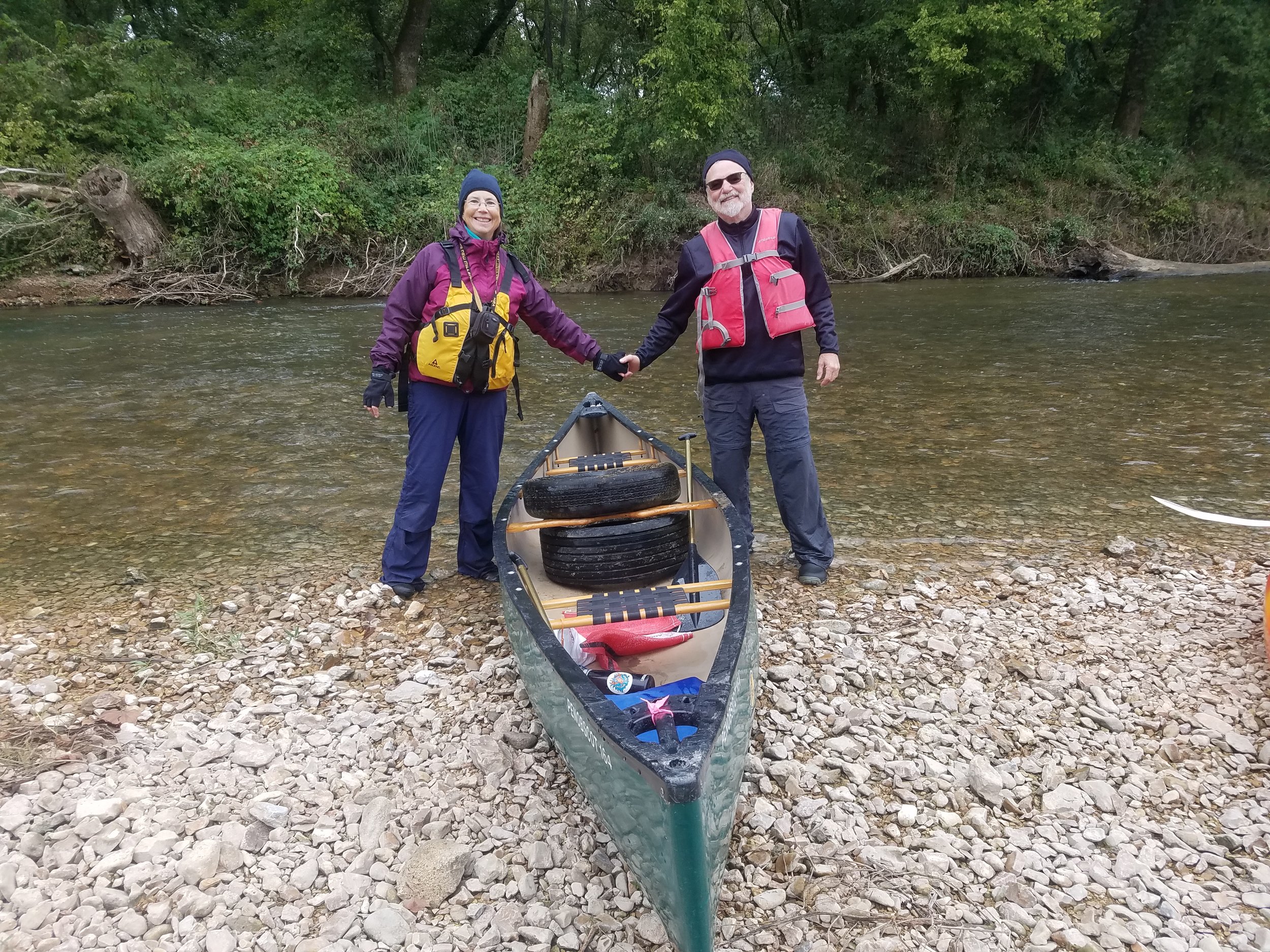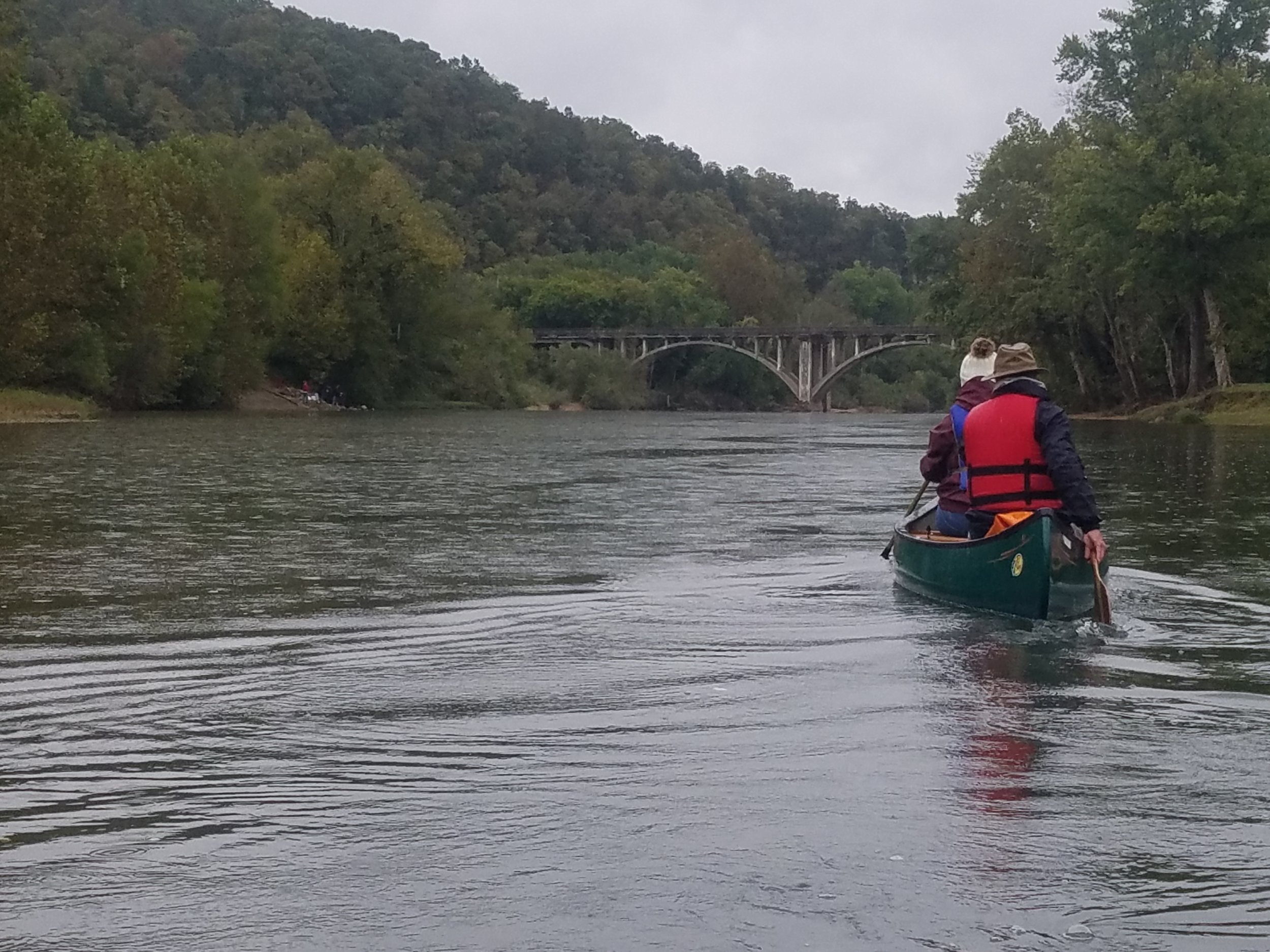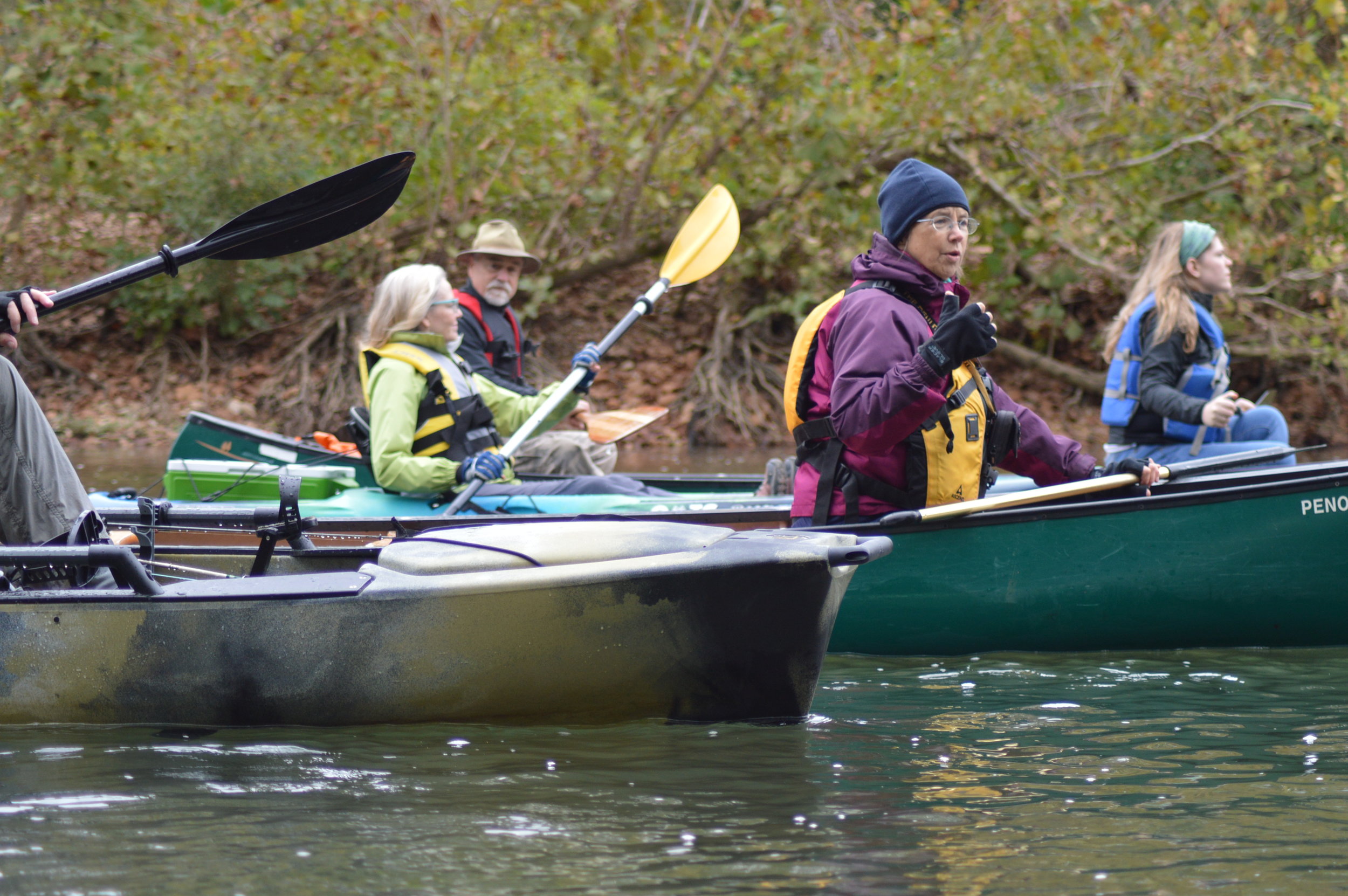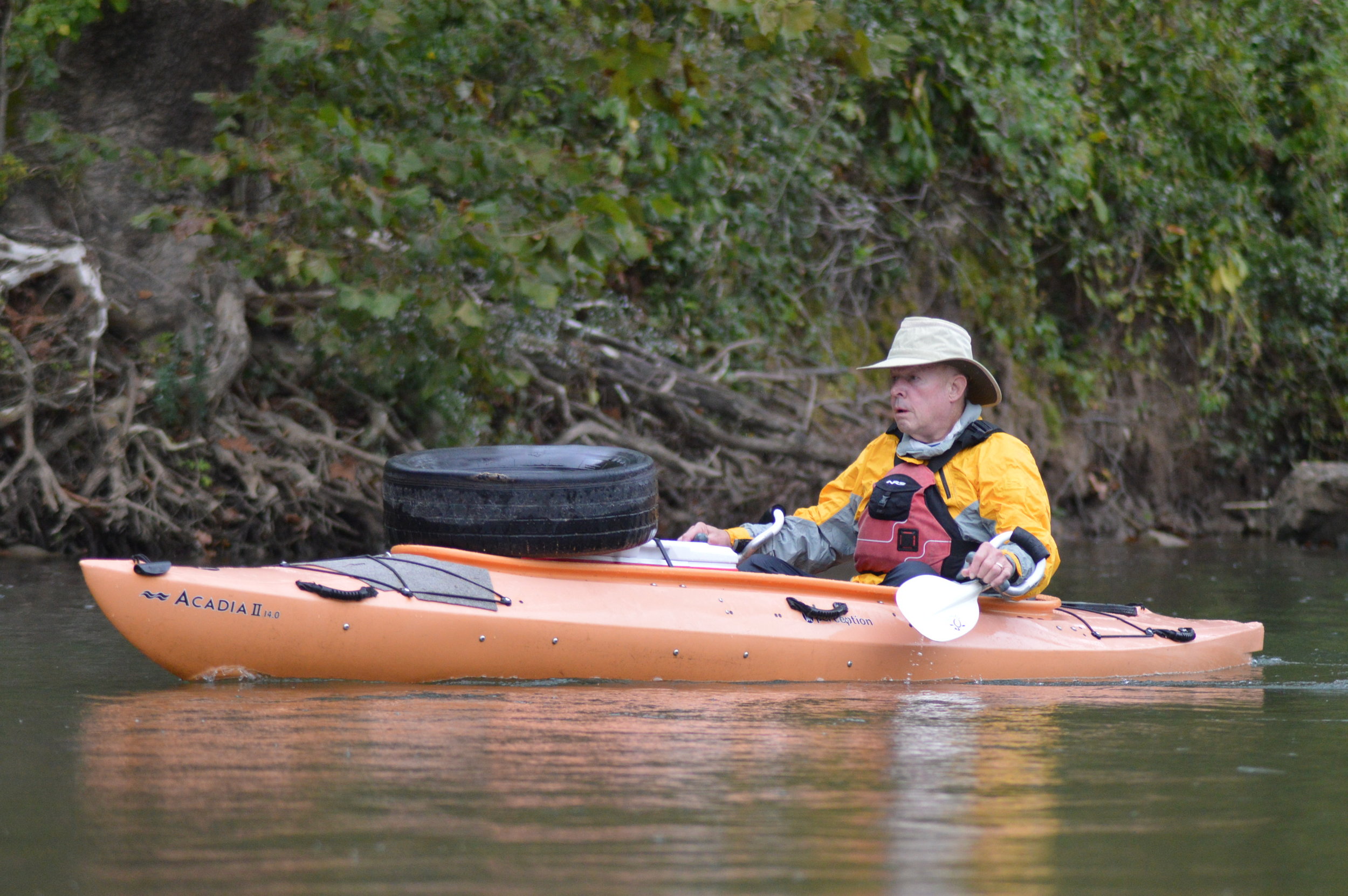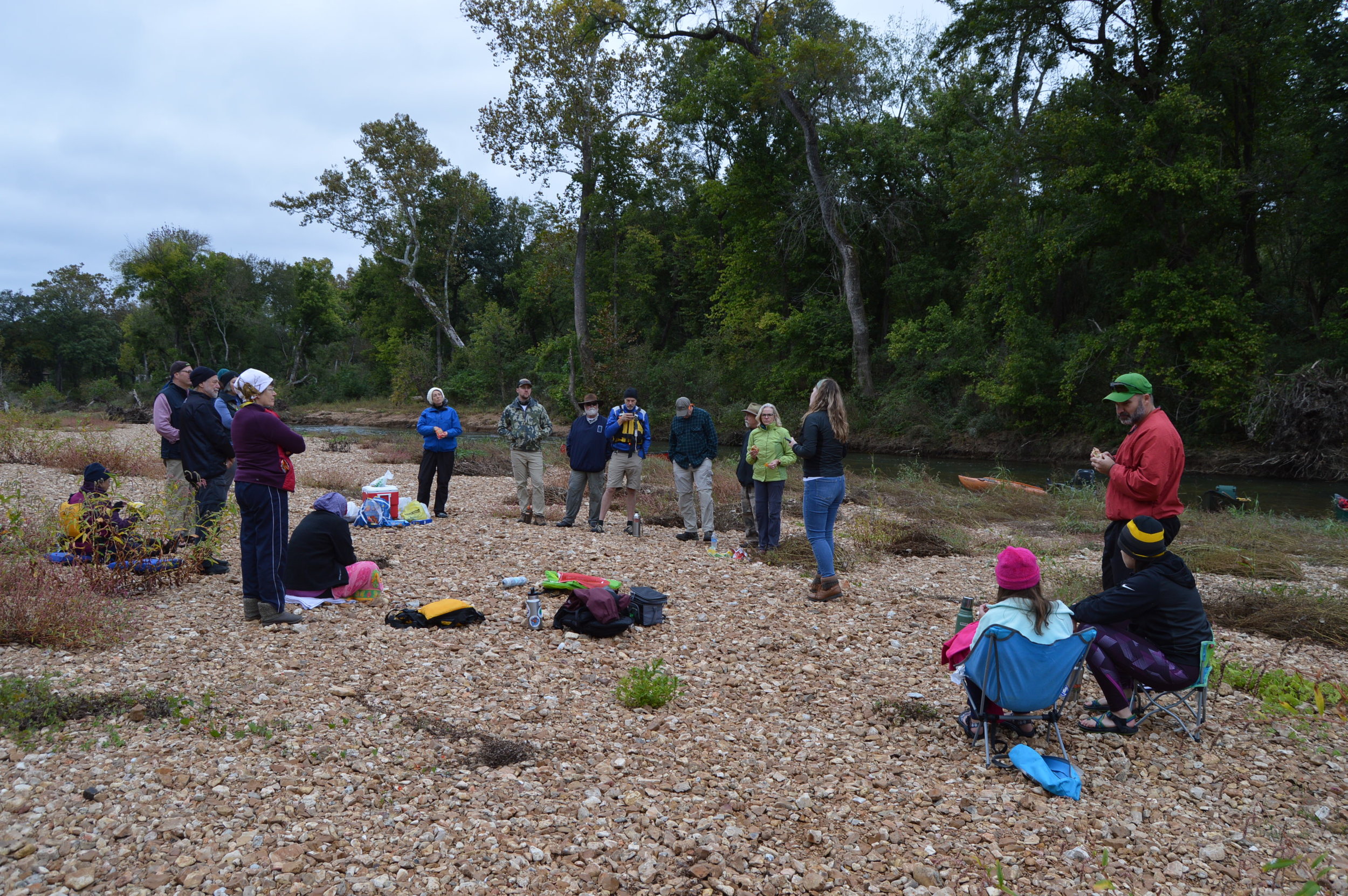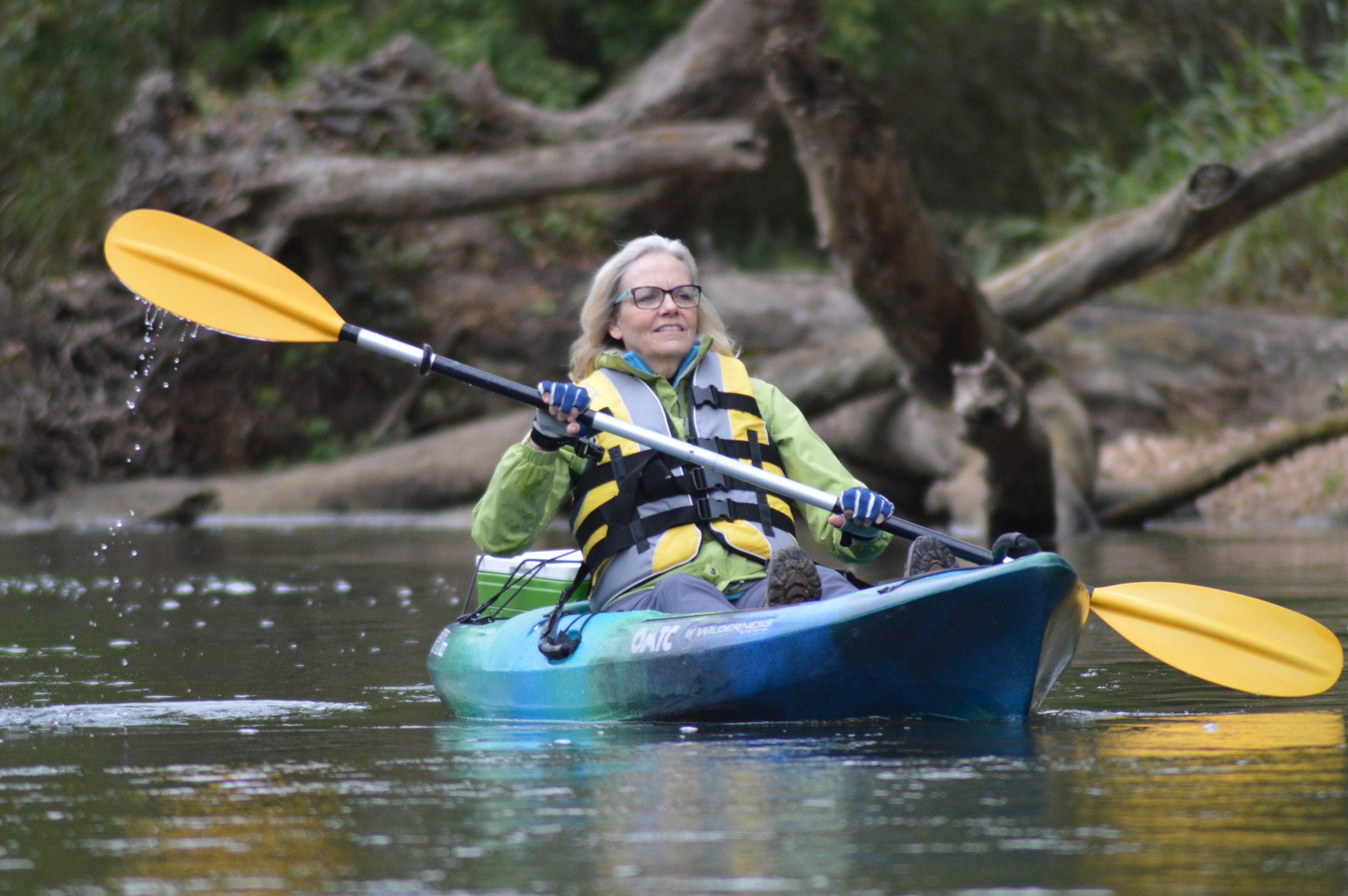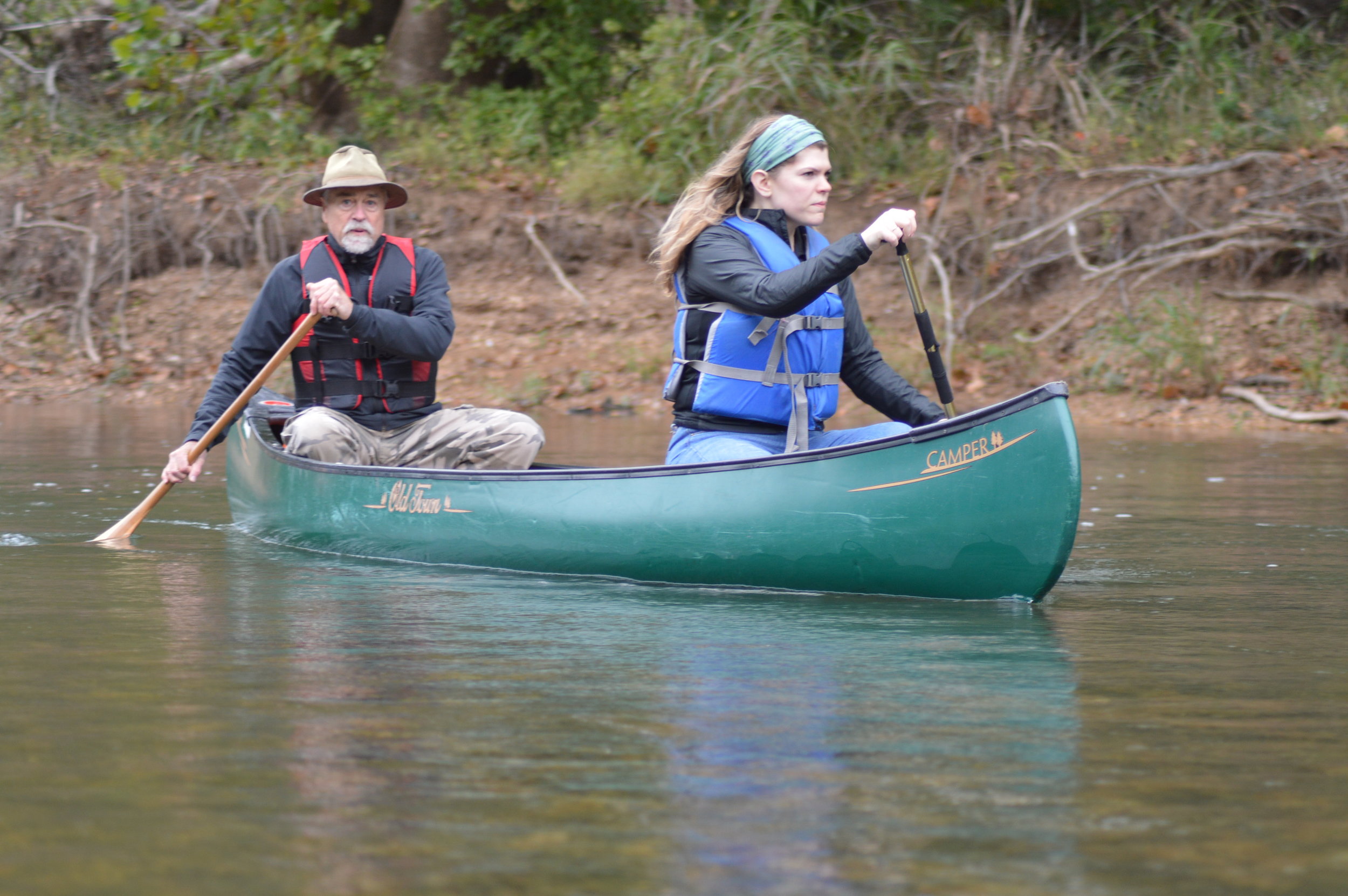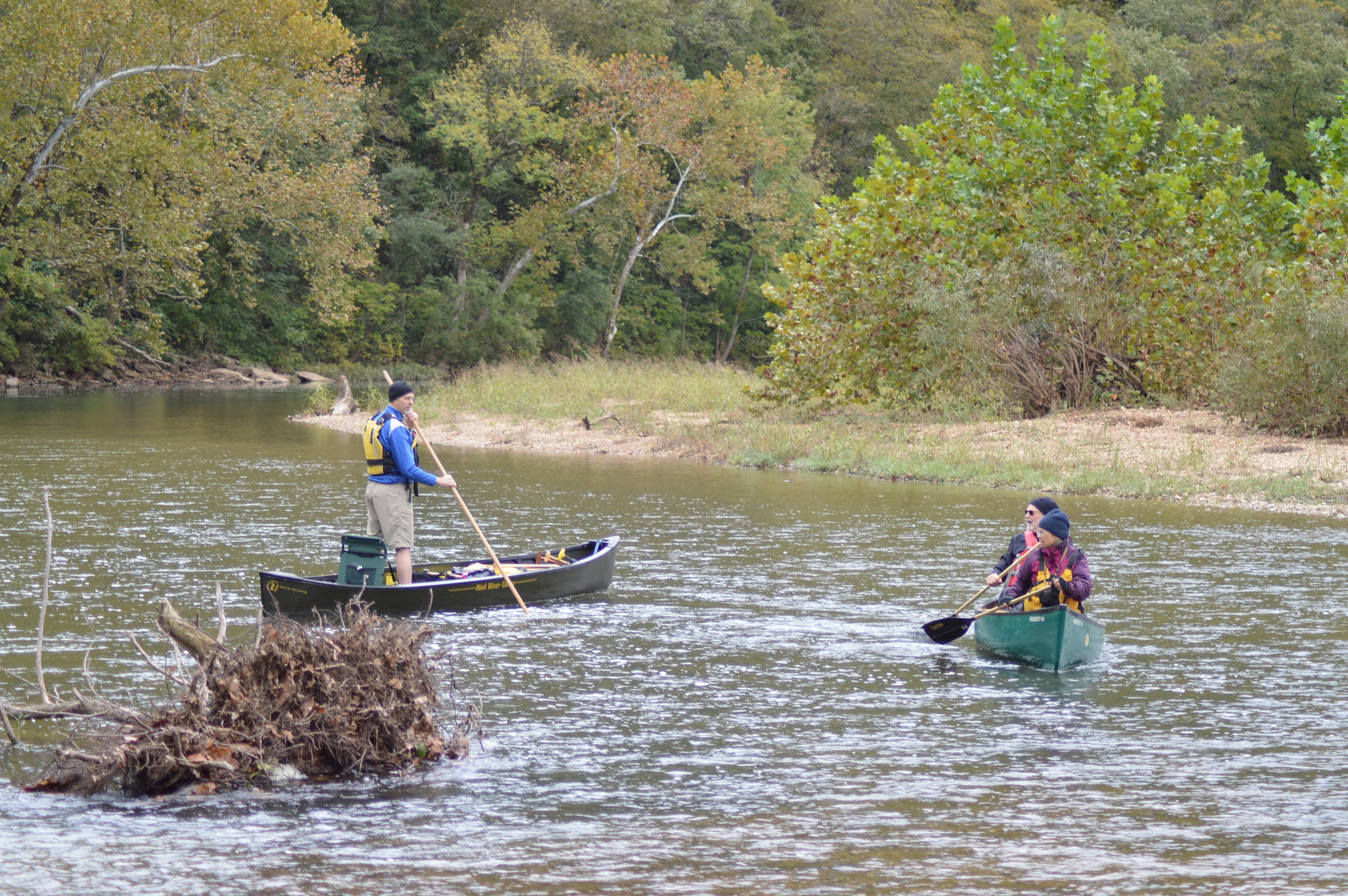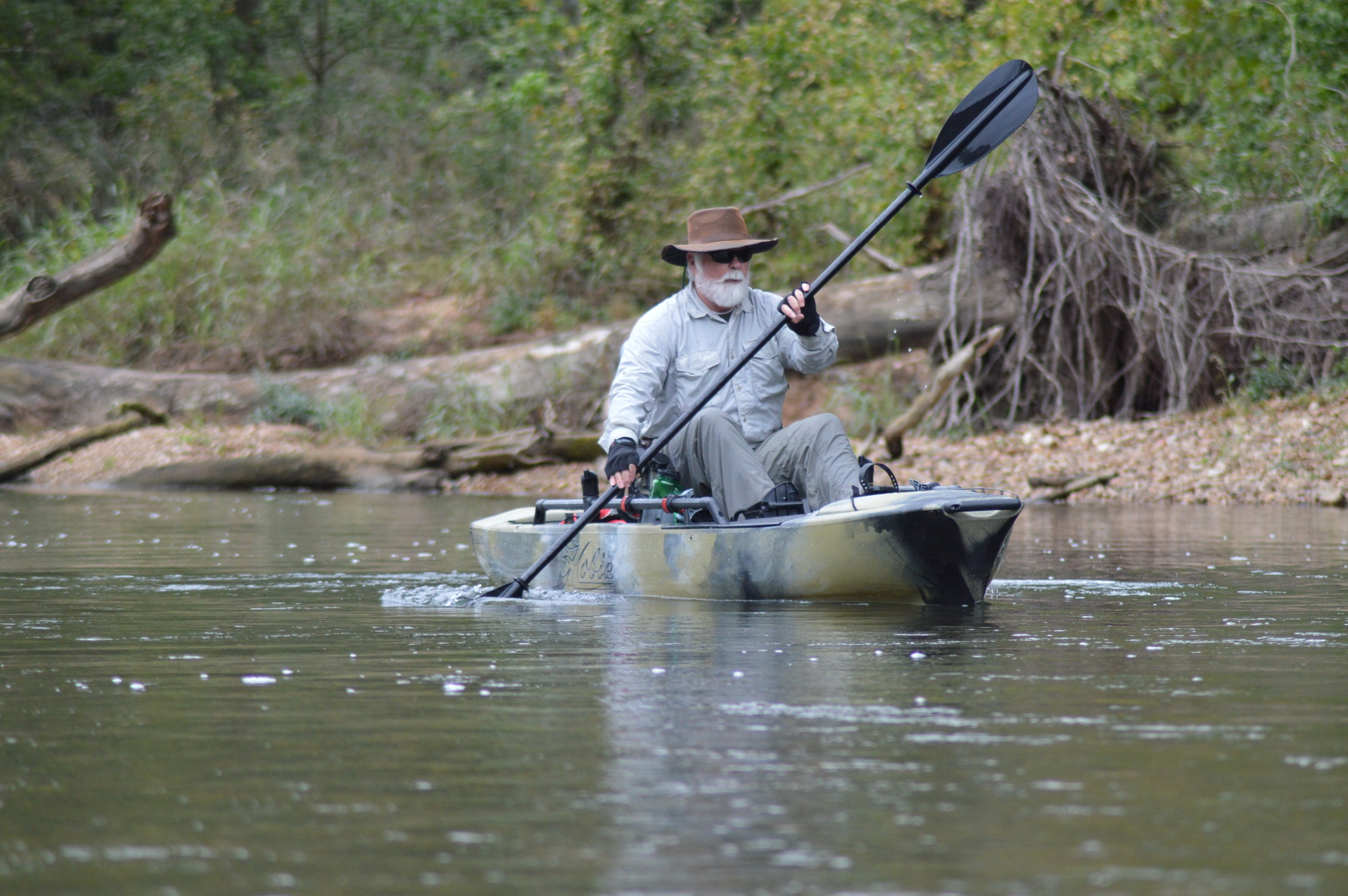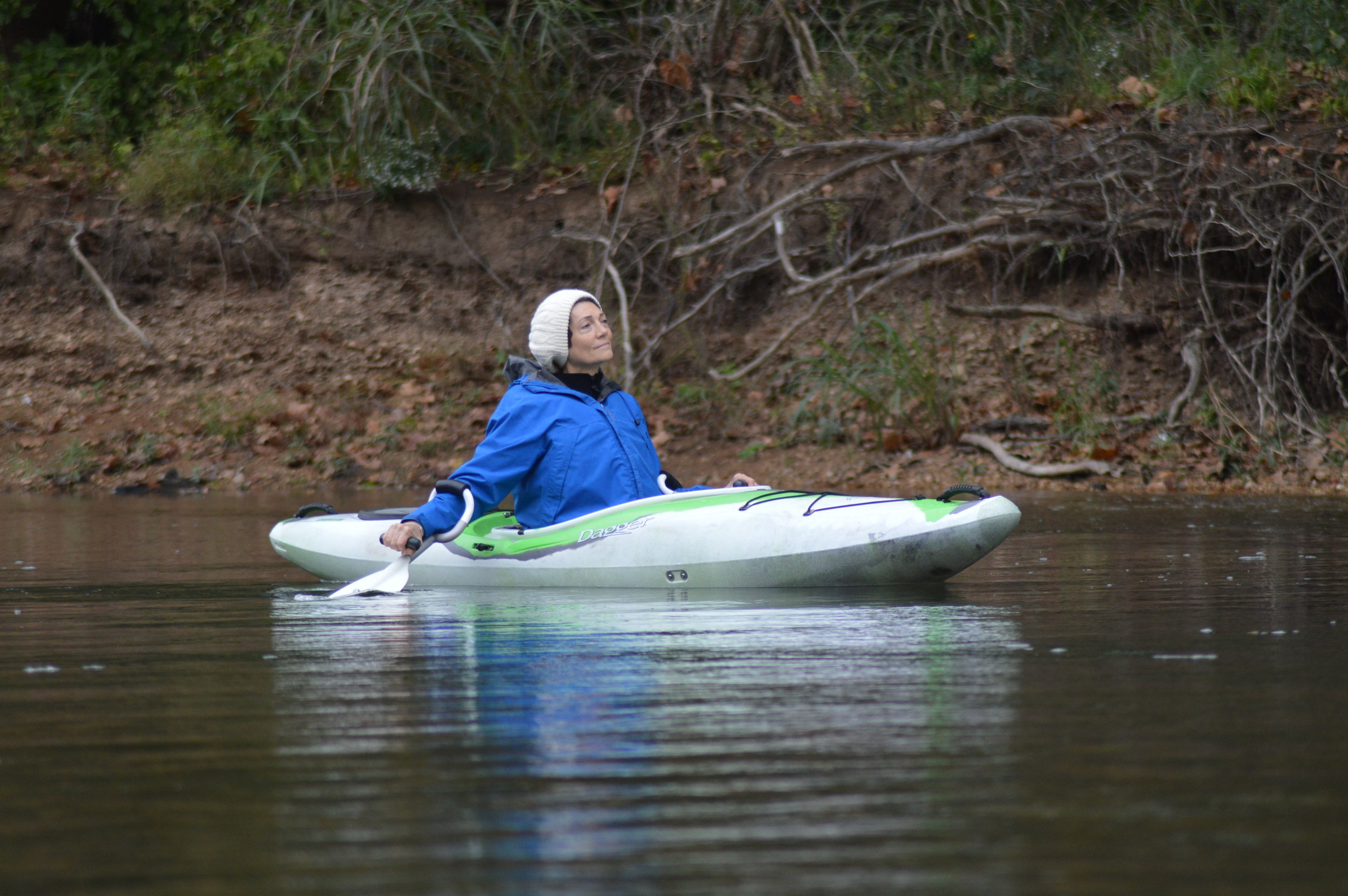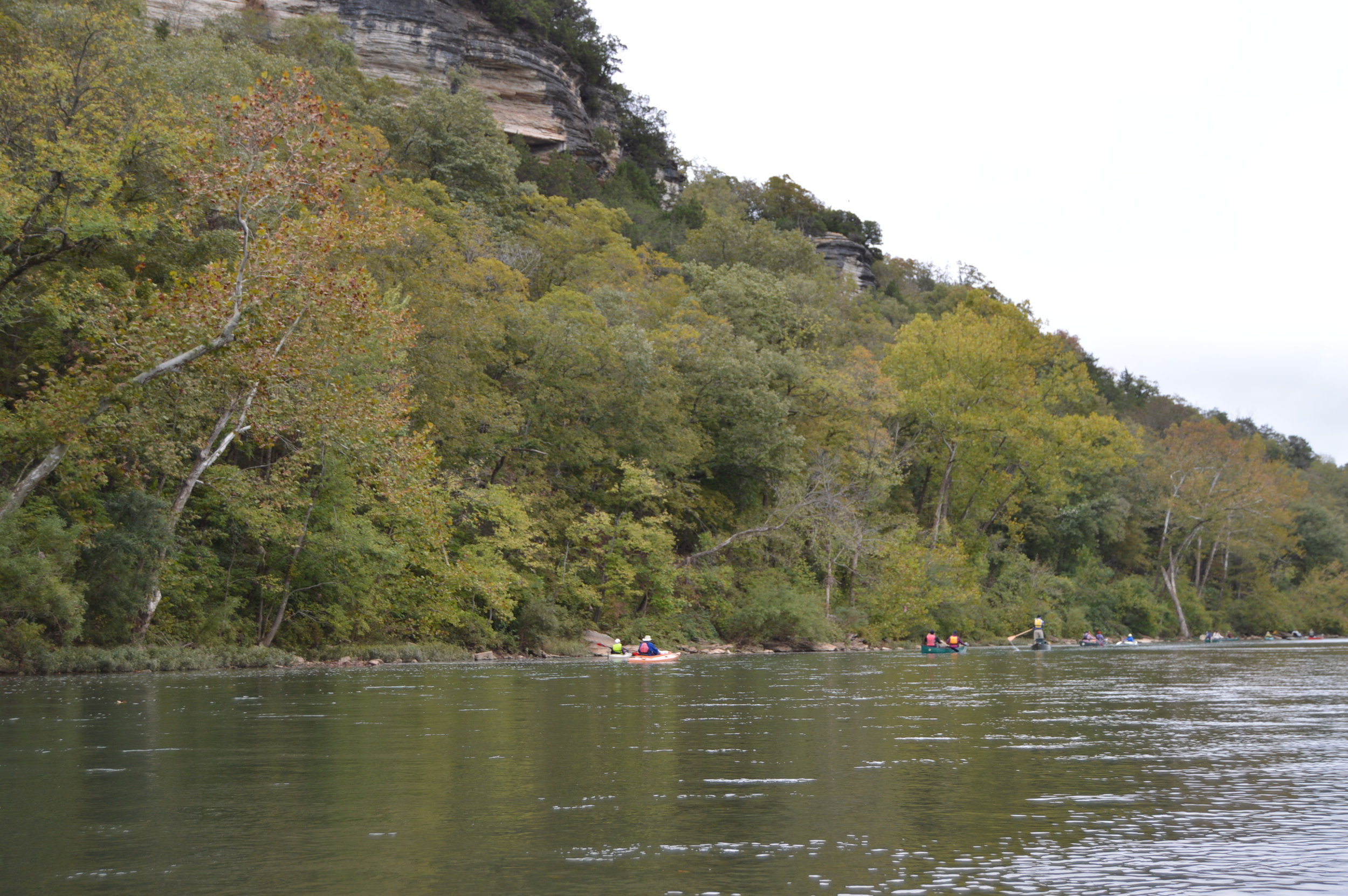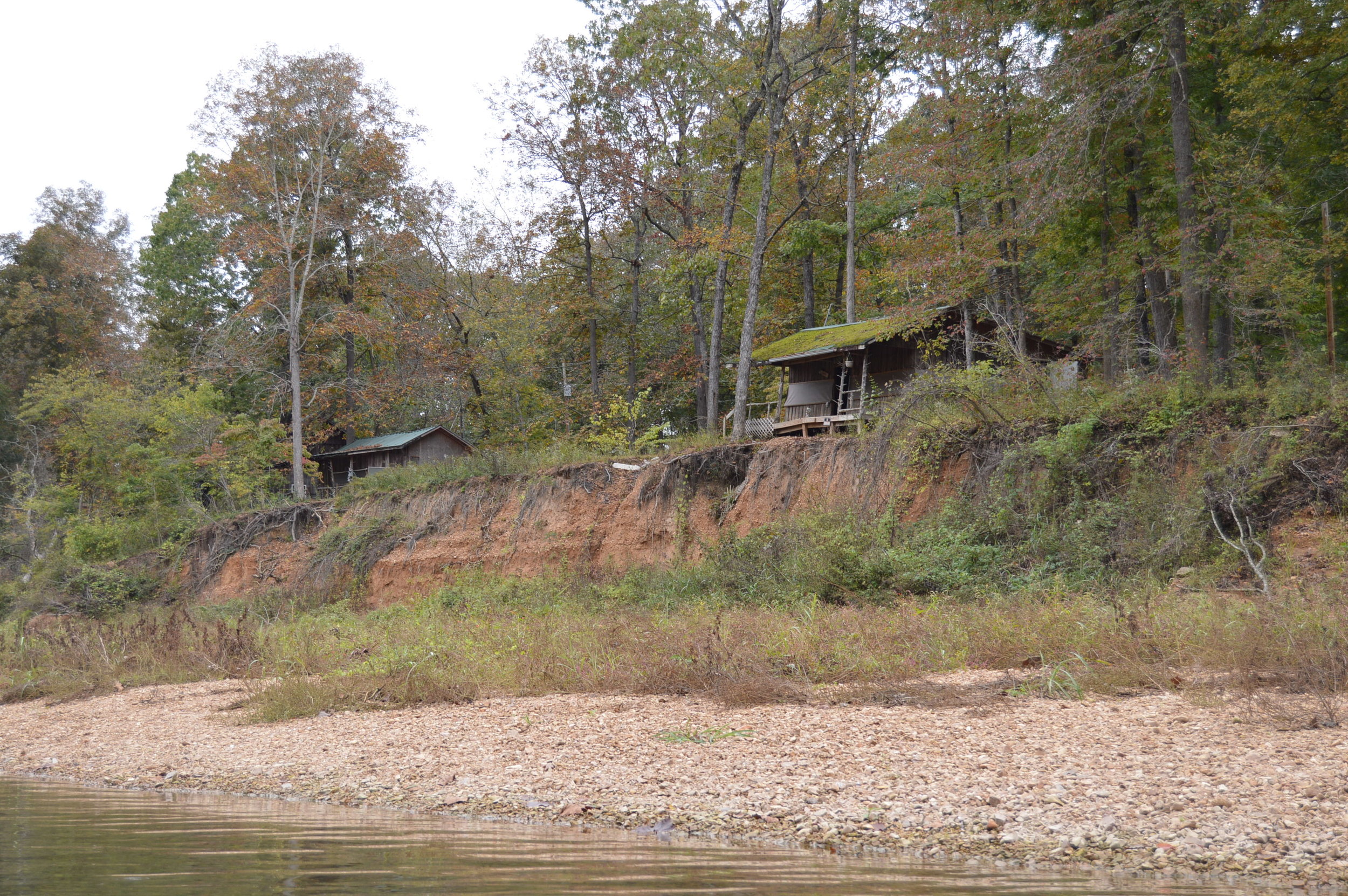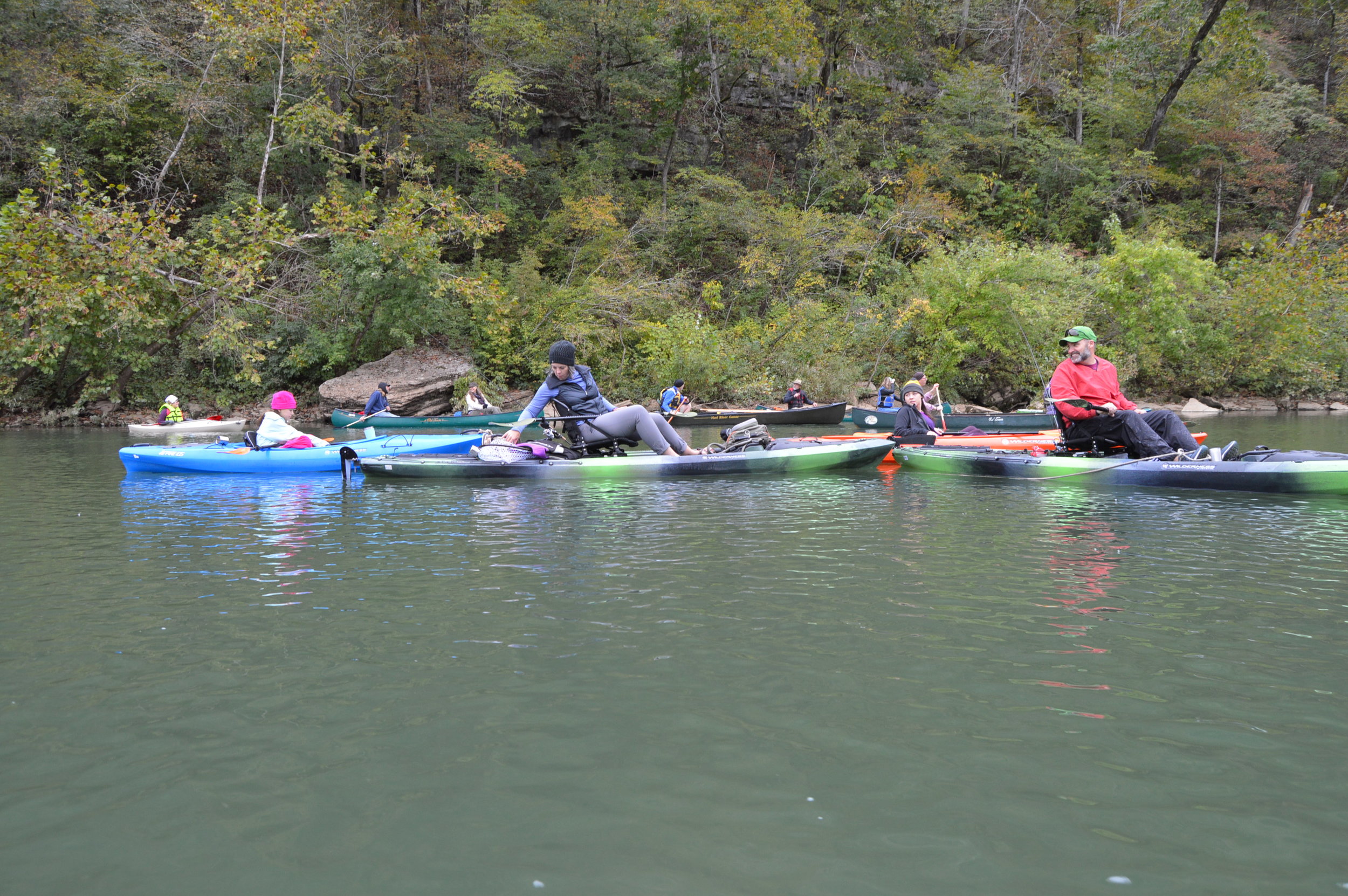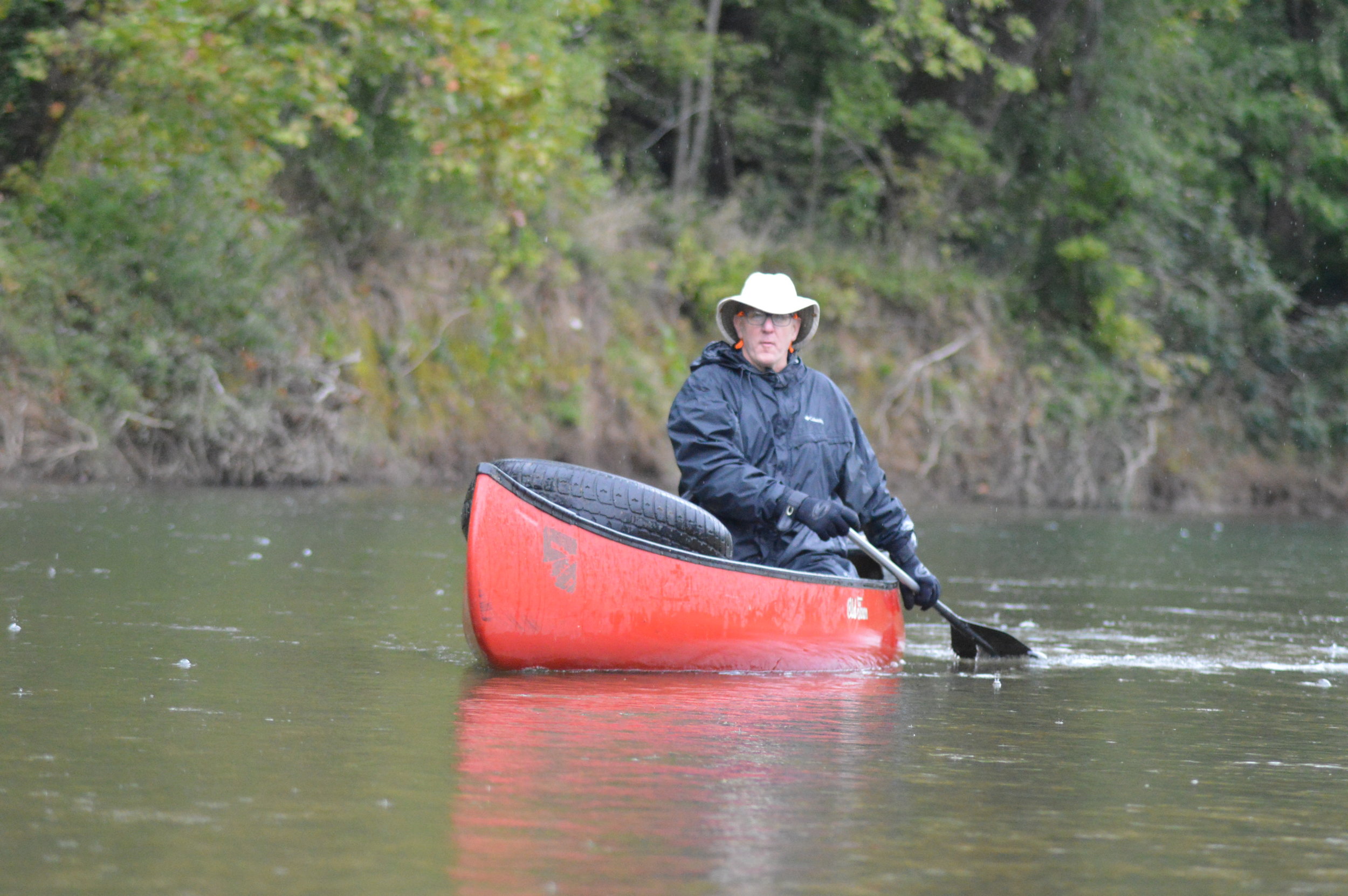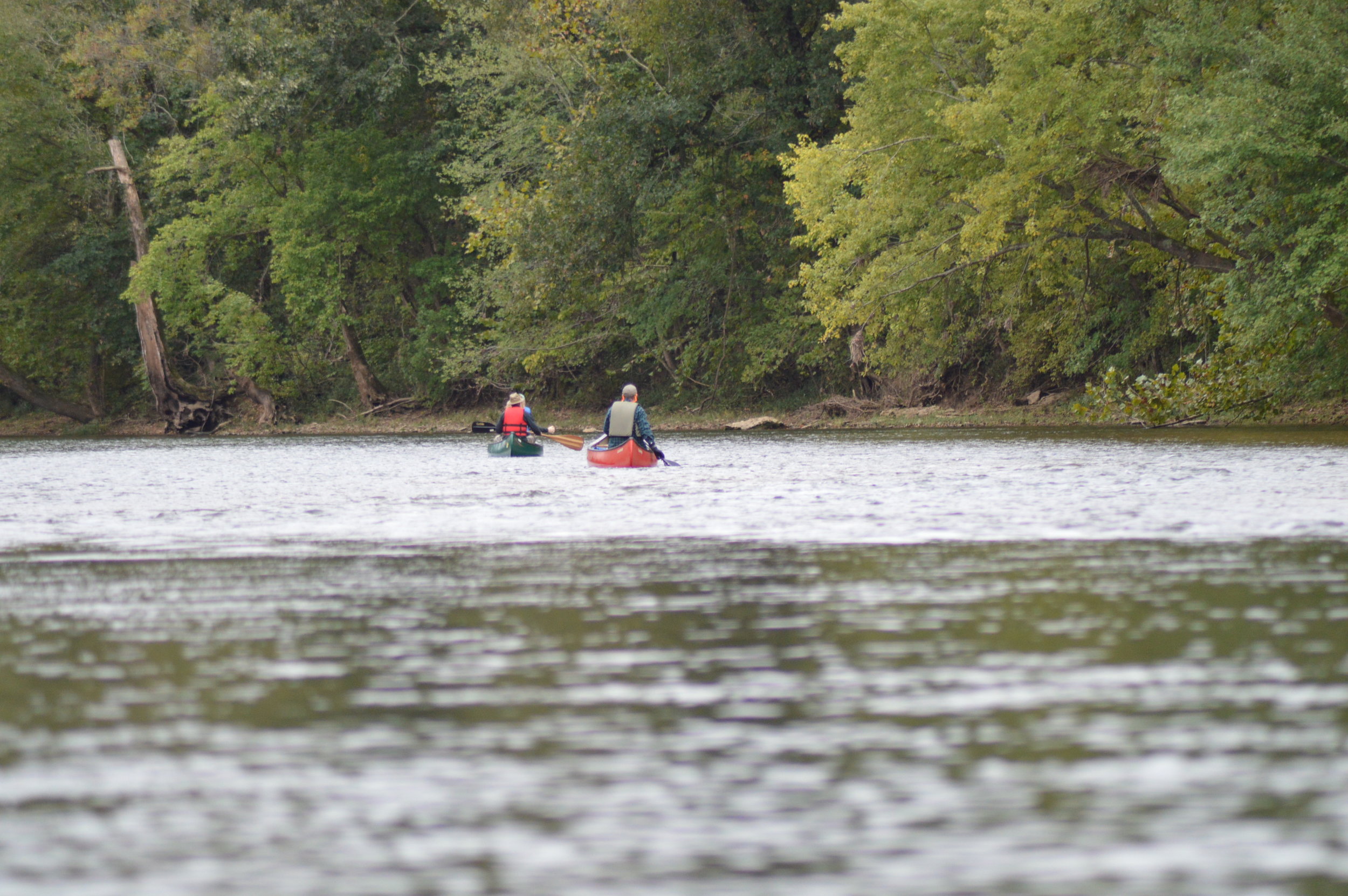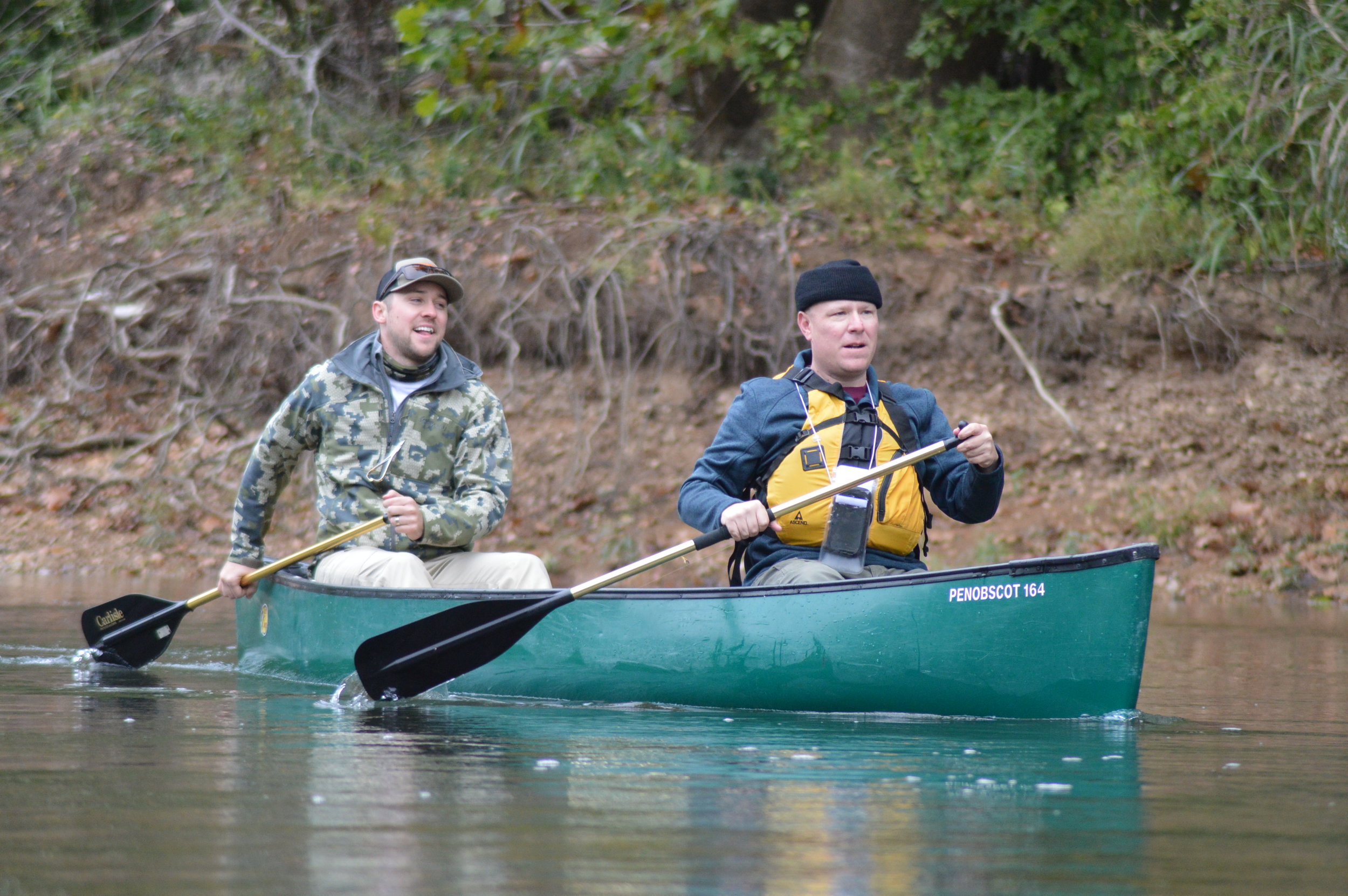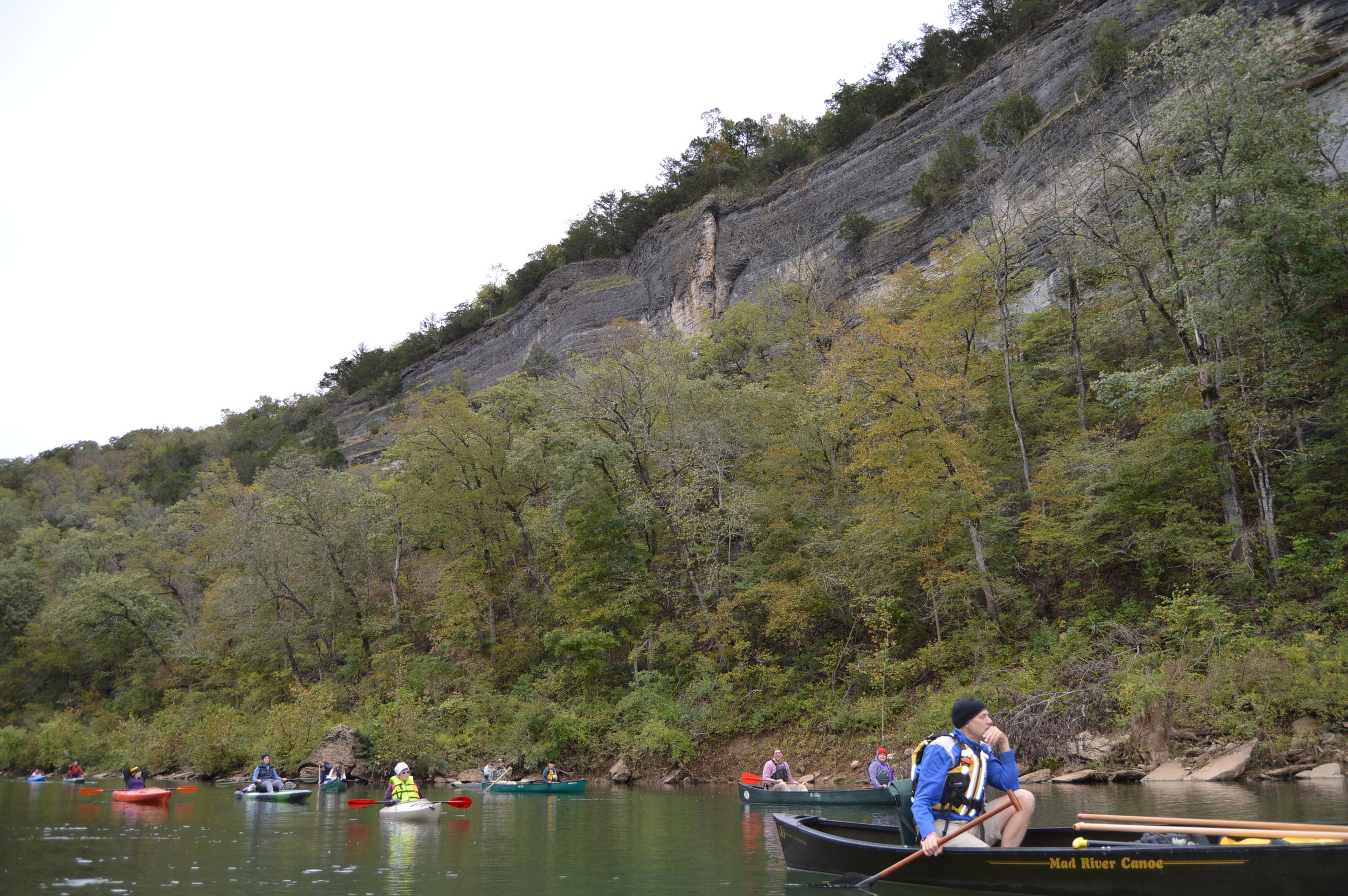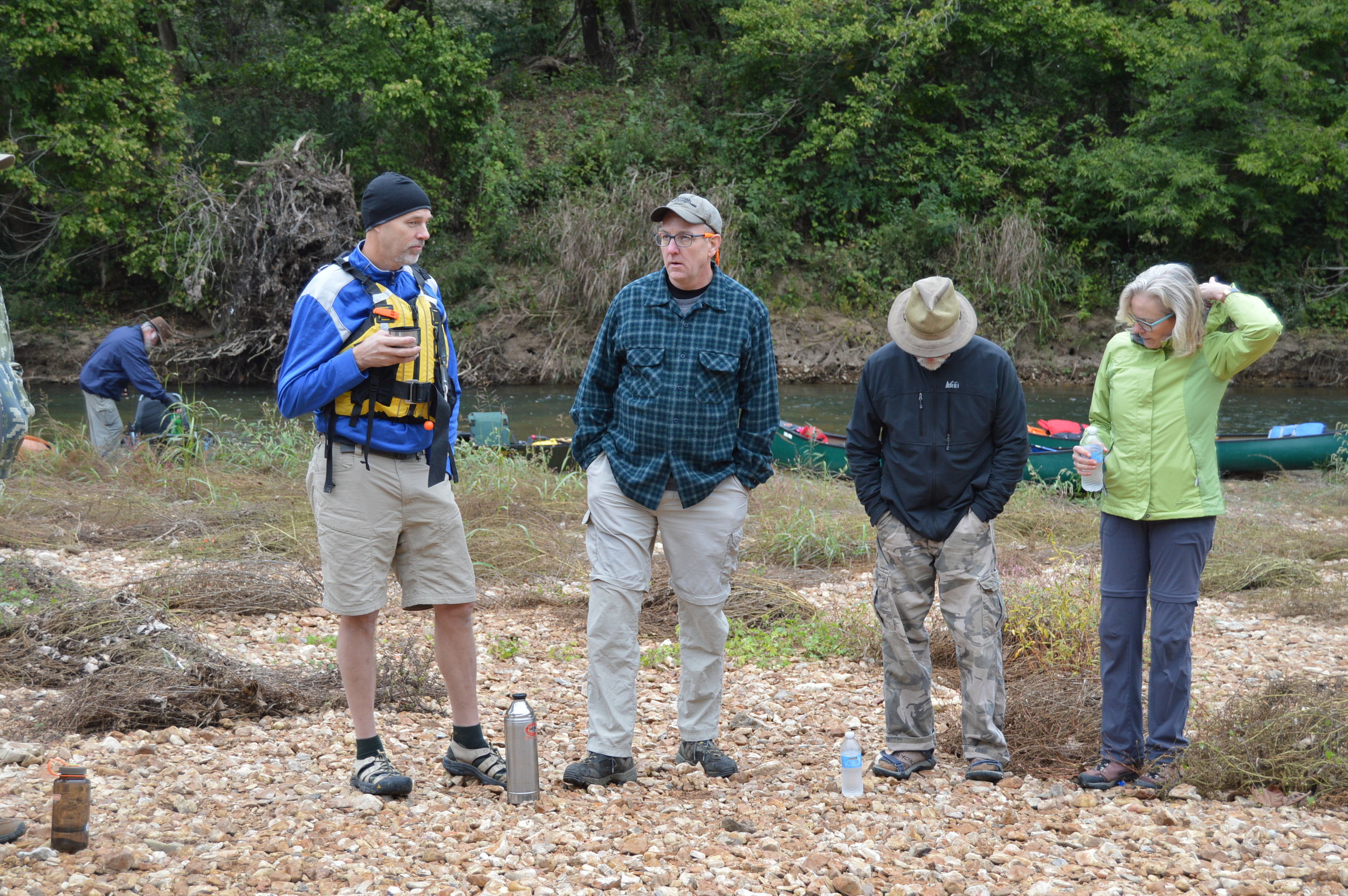“In order to advocate for something, you’ve got to know it first.”
That brief statement by JRBP Project Manager Brent Stock as we canoed the James this past Saturday during our annual member float trip stayed with me for quite a long time; I really didn’t know the James River. Oh, I knew of the James in an academic sort of sense through my Ozarks geography classes I taught, and the fact that Wilson’s Creek flowed into the James south of where I worked as a park ranger, but I really didn’t know the James in a personal way. To truly know a river, you have to experience it by floating on her waters. So on a cold and damp October Ozarks Saturday, I joined 24 other JRBP and Ozarks Water Watch members and staff on a brief five-mile float from Kerr Access near Horse Creek to Galena, my first James River float.
One of my favorite stories by Mark Twain is Life on the Mississippi, a fictionalized account of young Sam Clemens’ time as a “cub” under the famed riverboat pilot Horace Bixby. As he begins his apprenticeship under Bixby, Sam soon discovers that a pilot has to be familiar with every bend, sandbar, bluff reef and shoal in order to bring his boat, passengers and cargo safely to port. Bixby told Sam that a pilot had to learn the river and know it in his head and heart before he would become a “lightning pilot”, the most “unfettered and independent human being that lived in the earth”. Brent’s skills as a sternsman, as well as his good humor (“I say we go right toward that snag”) reminded me a little of Bixby.
Now, obviously the James isn’t the Mississippi, and steamboats never made it to her channel, as the farthest north they ever got was Forsyth on the White River. But as Brent and I paddled our way down the James with the rest of our band, I thought about Twain’s trials as a cub pilot as he attempted to learn the river by committing it to memory. In his later years as Twain wrote nostalgically of his youth, he became an advocate of the river as he knew it before it had been lost to development and progress. Joplin Globe Metro Editor Andy Ostmeyer, who joined us on the float, has been covering this subject recently with his series on Ozarks rivers. Look for his story on the James and the JRBP float trip soon.
As we made our way down the James to Galena, we passed Camp Yocum, which had been developed by Tom Yocum, one of Jim Owen’s float guides, for tourists from St. Louis, Kansas City and Chicago in the early 1900s. The old log cabins on the bluff above the riverbank reminded me of something you’d see at Silver Dollar City, only I reminded myself, this was the authentic Ozarks. This portion of the James and its famed float trips was the subject that our guest speaker, Kaitlyn McConnell of the local history and folklore blog Ozarks Alive, talked about as our party ate lunch on a gravel bar near Pratt Hollow. Several of our party picked up stray tires and other pieces of trash from the river channel and carried them along in their boats as unexpected passengers, but we were more than happy to escort them off the James.
While I composed my thoughts and wrote this blog entry, I read through the chapter entitled “The Pastoral James” of Leland and Crystal Payton’s James Fork of the White: Transformation of an Ozark River, which seemed to confirm Kaitlyn’s comments that our float was essentially the same one that the customers of Owen, Yocum and other guides experienced so many years ago. Those first tourists were attracted to the James and other Ozarks rivers and streams because of their natural beauty – and those of us with JRBP, Ozarks Water Watch and other like-minded organizations want to see that natural beauty be available for future generations.
I’ve been on the job at JRBP now for two months, and yet I somehow feel like my first float on the James was my “baptism” of sorts. Just as Brent said, I can truly advocate for the James, because I’ve now been on a portion of her waters – and thankfully I made it without experiencing a true “heel kicking river baptism”, as Twain described, by avoiding tipping our canoe. I’m sure that will come in time as well, because while this was my first float on the James, it certainly won’t be my last.
We’ll see you down the river.
**A special paddle salute to JRBP member Julie Carey for her outstanding photos from the float trip!
